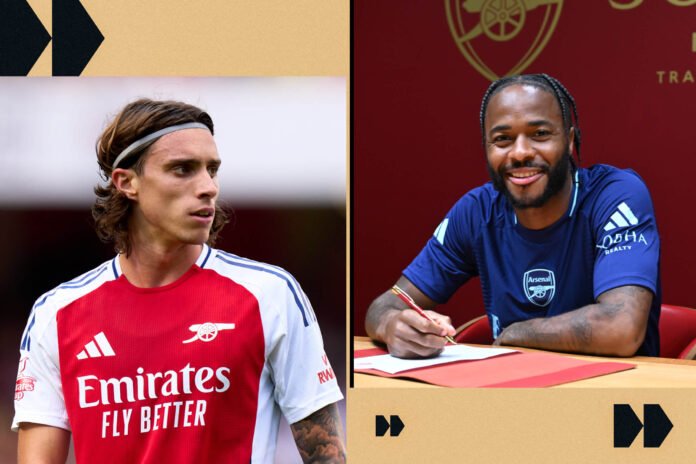The crucible of the final days of the transfer window tends to crystallise thinking. In the finals 24 hours before the deadline, Arsenal landed upon practical solutions.
The need for an additional forward was met with the loan of Raheem Sterling from Chelsea — a low-risk move that could potentially have significant upside. When Arsenal’s attempts to prise away goalkeeper Joan Garcia from Espanyol hit an impasse, they found a similarly pragmatic answer, swiftly wrapping up a loan deal for veteran shot-stopper Neto.
According to sources, who, like all of those spoken to for this article, were kept anonymous to protect relationships, Arsenal staff are particularly enthused about the arrival of Sterling. They feel can add versatility, experience and quality to every position across the front line. He’s also a proven winner, with four Premier League titles already to his name. Sources with knowledge of the deal say Arsenal have struck a deal on favourable terms: they will pay significantly less than 50 per cent of his salary for the duration of his loan. Chelsea were contacted for comment by The Athletic.
A week ago, Arsenal thought they may go without. Their primary attacking targets in the window — Benjamin Sesko and Nico Williams — had proven unattainable. The club reasoned that, with an attack that scored 91 league goals last season, they could afford to keep their powder dry and wait for a future window to strengthen the front line.
At the outset of the final week of the window, Sterling was discussed as a target — along with other names such as Kingsley Coman — but there was no clear intention at that point to move forward with a transfer.
Sterling has joined Arsenal on loan (Eddie Keogh/Getty Images)
For his part, Sterling did not hide his admiration for Arsenal or Mikel Arteta. It was an ideal move for the 29-year-old, who has trained away from his team-mates since being left out of Chelsea’s matchday squad for their defeat by Manchester City on the opening weekend.
Sterling sees Arsenal as providing a solid platform upon which to try and regain his England place. Living in London is also important for his young family. He has an excellent relationship with Arteta. The pair worked together during Arteta’s time as assistant manager at Manchester City, when Pep Guardiola publicly credited his countryman with helping to improve Sterling’s goalscoring ability.
“My time with Raheem was exceptional,” Arteta told the media last week. “We built a really strong relationship. He was unbelievable at the time we were together and he taught me a lot as well — about individuals, how they play and how we give them support and help them. He’s someone I have a really strong feeling about.”
Yet for all that, a deal between Arsenal and Sterling did not become a realistic prospect until the window’s final hours.
The injuries sustained by Gabriel Jesus and then Mikel Merino were a factor in Arsenal’s shift in stance. Jesus is expected to return relatively soon after the forthcoming international break, but if Merino’s shoulder fracture is confirmed, he is likely to be out for at least six weeks. Merino’s absence could have a knock-on effect, with Kai Havertz potentially required in midfield. That made adding a forward more important.
Arsenal entered into a transfer-merry-go-round that involved Sterling and close friends Jadon Sancho and Reiss Nelson, with Sancho the first domino to fall when he moved from Manchester United to Chelsea on loan with an obligation to buy.
Arsenal felt they had a strong hand, with Chelsea eager to move Sterling on and the player’s preference already clear. They have ended up with a deal they see as having little downside: a loan without any future obligations for a highly motivated player.
The transfer went to the wire, but in managing director Richard Garlick, Arsenal had the ideal man to ensure the deal was ratified. In his time as director of football for the Premier League, part of his role was to oversee the dealsheets which clubs submit to confirm that an agreement has been reached, granting them additional time to submit the remaining documentation.
Arsenal end the window having signed goalkeepers David Raya (after his loan last season) and Neto, defender Riccardo Calafiori, midfielder Merino and forward Sterling. They believe they have improved Arteta’s options in every outfield department, standing them in good stead for another title challenge. The sales they have made, meanwhile, ensure they will continue to have flexibility in the market moving forward.
At London Colney on Thursday, Arsenal found themselves scrabbling for a solution to their goalkeeping problem — a situation that has left them with only one senior goalkeeper eligible for Saturday’s Premier League match against Brighton. Amid clamour for an attacking signing, Arsenal were, for a time, frantically focused on the other end of the pitch.
Goalkeeper is a position typically associated with stability and continuity. In Arteta’s four and a half years at the helm, Arsenal have had three different first-choice goalkeepers. They have signed five senior goalkeepers — one in each summer window. Alex Runarrson and Matt Turner have been bought and jettisoned within 12 months, while goalkeepers who have left the club, such as Bernd Leno to Fulham and Emiliano Martinez to Aston Villa, have gone on to succeed elsewhere.
There was considerable internal frustration about the fact Arsenal spent precious time and resources in the final week of the window dealing with yet more turnover in the goalkeeping department.
Arsenal knew they were likely to lose Aaron Ramsdale after the England international was supplanted as No 1 goalkeeper by Raya. That meant they needed a new deputy for Raya. They also hoped to sign a homegrown third-choice goalkeeper to lend experience and depth to the group. Karl Hein, 22, was convinced to sign a new deal with the club after the expiry of his contract in June, but a condition of him staying was that he would be allowed to go out on loan and play regular football.
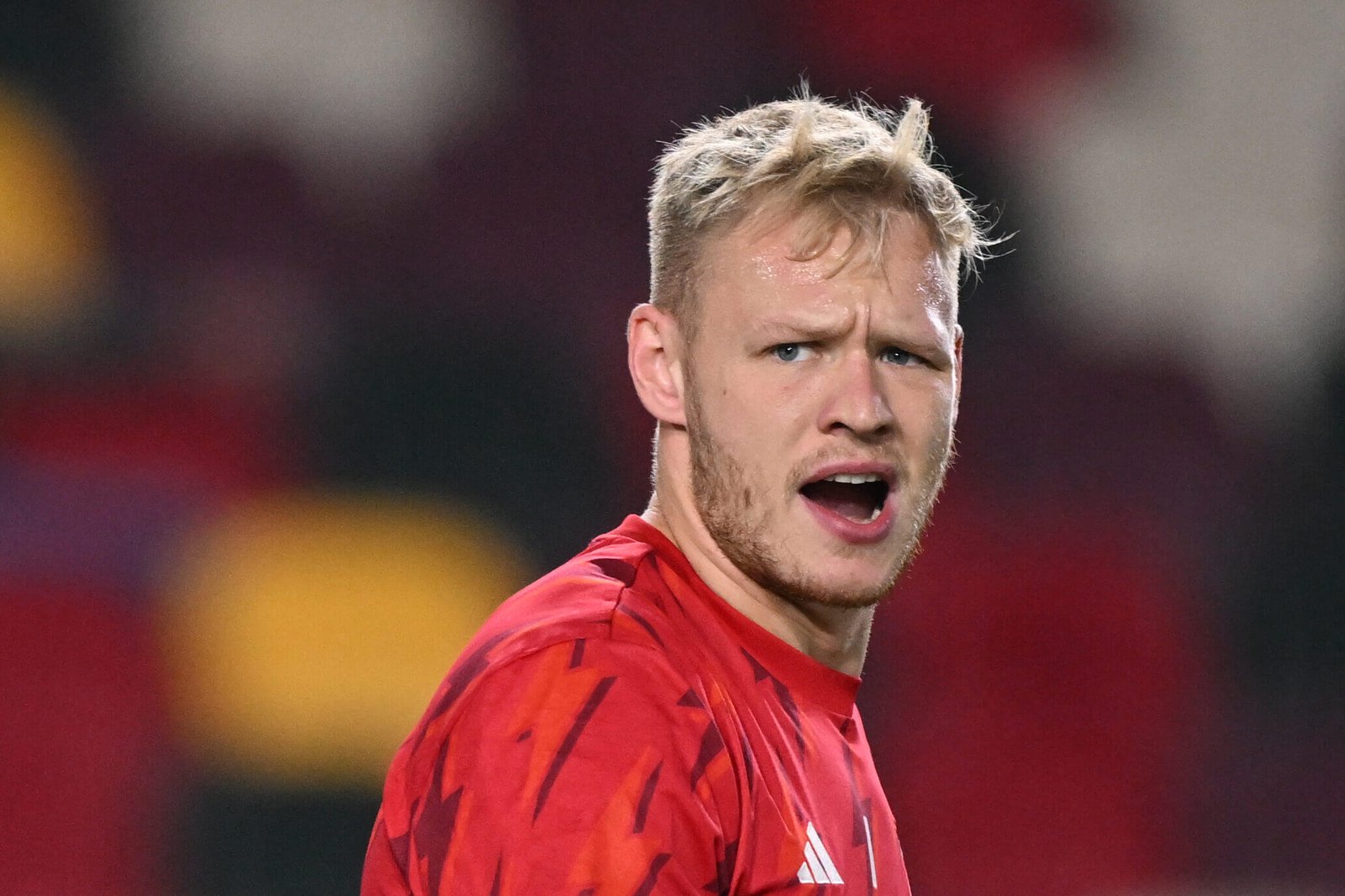
Ramsdale has left Arsenal for Southampton (Justin Tallis/AFP via Getty Images)
That left Arsenal needing to turn Raya’s deal permanent and potentially add another two goalkeepers to the group.
It is common for goalkeeper coaches to have a say in recruitment and Arsenal is no exception. Inaki Cana, who joined along with Arteta in December 2019, has been heavily involved in identifying Arsenal’s goalkeeper signings. Runarsson and Raya are players he had coached before, at Nordsjaelland and Brentford respectively.
There are no arguments about Raya’s quality — his first season at Arsenal saw him win the Golden Glove and be named in the PFA Team of the Year — and Arteta and Cana share a philosophy for how they want their goalkeeper to play. Across the club, however, there has been considerable exasperation at Cana’s insistence on recruiting from such a narrow range of options.
This summer, Cana identified Espanyol’s Garcia as his preferred replacement for Ramsdale. He also wanted Dan Bentley, another who had played under him at Brentford, for the third-choice role.
Arsenal contacted Garcia and explained they would only be able to proceed with a deal once they were confident of selling Ramsdale. At the time, Garcia had a €25million (£21m; $28m) release clause in his contract, which rose to €30million in August.
Throughout their pursuit, Arsenal were assured they would be able to acquire Garcia for significantly less than the clause. As Ramsdale closed in on a permanent move to Southampton, Arsenal opened negotiations with Espanyol. It quickly transpired that Espanyol’s position that they would not sell for anything less than the full amount was more than just posturing.
For any backup goalkeeper — let alone a 23-year-old who only broke into the Espanyol first team in March and has only played a few games in the Spanish top flight — that was a steep price.
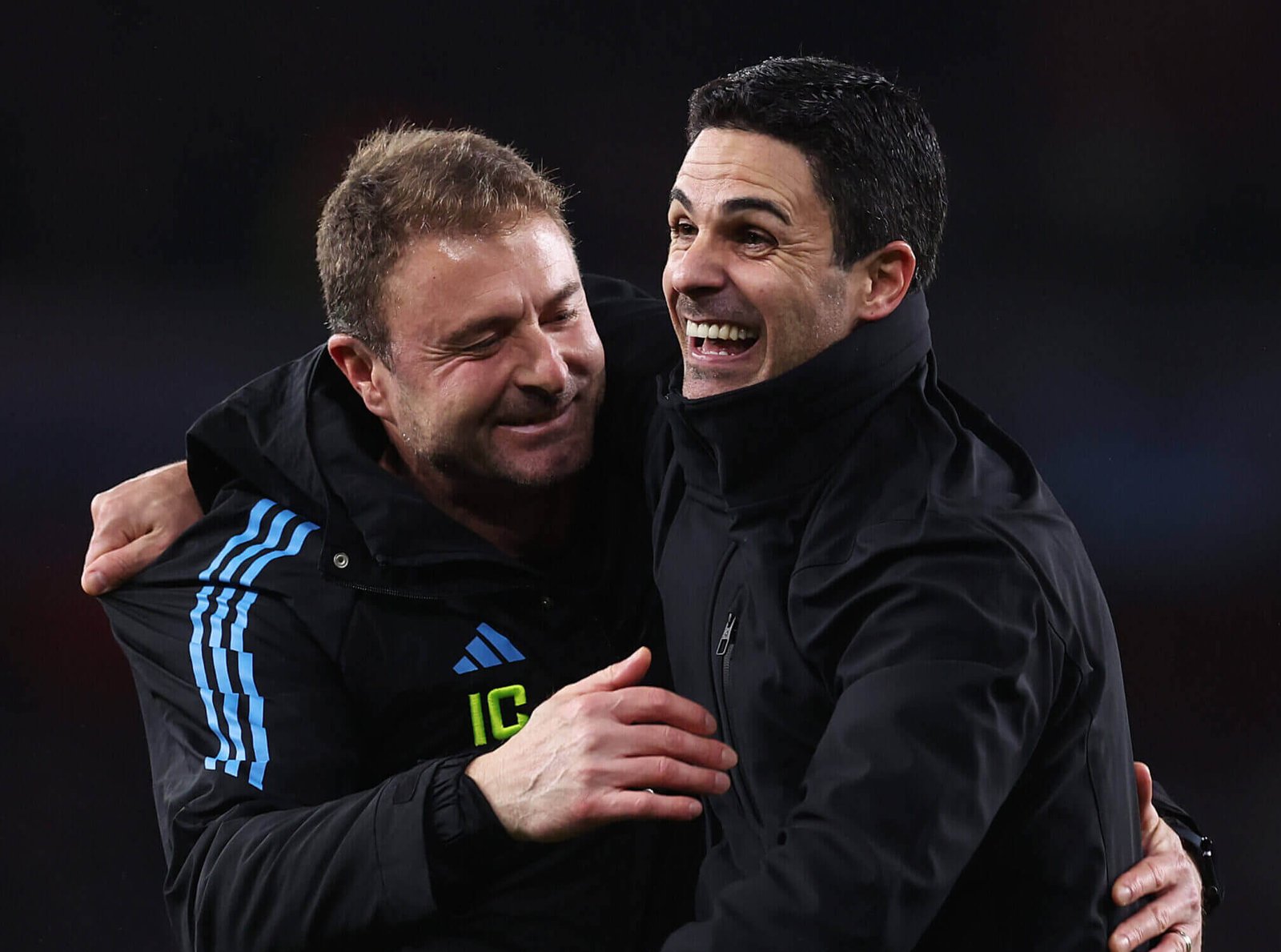
Cana and Arteta have a shared philosophy (Julian Finney/Getty Images)
On Thursday, it became clear that, despite their best efforts, Arsenal could not get Espanyol to budge. But in recent months, Cana had vetoed several alternative goalkeepers proposed by the club. Arsenal were faced with a dilemma — pay €30million for Garcia or renege on Ramsdale’s move to the south coast. It meant an anxious wait for Ramsdale, who had already undertaken his Southampton medical but had to wait overnight as Arsenal withheld some crucial paperwork.
In the end, sporting director Edu resolved the situation. He proposed a loan deal for Bournemouth’s Neto, 35, a player Arsenal had seriously considered signing during his time with Barcelona. Arsenal have acquired experienced cover for a fraction of the cost, but he is cup-tied for the Carabao Cup having featured for Bournemouth in their 1-0 defeat to West Ham.
Having had two bids dismissed this summer, Arsenal made a final inquiry over Wolves’ Bentley on deadline day. At that late stage, however, it was impossible for Wolves to source a replacement. In this role, too, Arsenal discussed several candidates, including Chelsea’s Marcus Bettinelli and Wigan Athletic’s Sam Tickle, but could not find a player who met Cana’s exacting specifications.
Tommy Setford, 18, will now step up to take the third-choice position. It’s not an entirely satisfactory outcome, as some at Arsenal feel his development would be best served by remaining with the academy.
While Neto appears a sensible move, it’s still only a temporary solution. Despite the focus on goalkeepers during this window, Arsenal may well enter next summer’s market looking for at least one more.
Arsenal’s over-arching strategy for this summer window was to raise the level of the squad — to trade in players for superior replacements, thus lifting the squad’s ‘floor’ and giving Arteta a wider pool of reliable players to work with.
Last season, the first-team minutes were largely shared among just 14 trusted players. Arsenal aimed to expand that group, creating a more layered squad to enable Arteta to sustain the challenge for silverware across multiple fronts.
A necessary part of that strategy was selling — Arsenal didn’t necessarily want a bigger squad, but a better one.
There was an economic consideration, too. In previous summers, Arsenal fell foul of committing to extravagant expenditure in the market, expecting they would recoup significant sums through sales towards the end of the window. When those sales have failed to materialise, the club has been left with a substantial deficit. That is not a sustainable approach to the transfer market.
And sustainability matters to Arsenal. The decision-makers have never shifted from wanting the club to be run responsibly. The lavish expenditure of recent summers has been a necessary medicine — a corrective to help restore the club to competing for major trophies and reclaiming the Champions League revenue needed to keep the books balanced.
Arsenal are also mindful of the increased regulation around spending. The club have a skilled team of lawyers and accountants who help monitor Arsenal’s standing concerning profit and sustainability rules (PSR). Although Arsenal are not thought to be in any imminent danger of contravening the rules, they not only have to ensure they comply with the regulations today, they have to ensure they have financial flexibility in future windows.
Arsenal’s desire to sell players this summer was well-known within the football industry — so much so that several agents took it upon themselves to seek out buyers for those deemed dispensable. Various Premier League clubs were approached by third-party agents offering them Arsenal players for sale, with details of Arsenal’s demands and associated salaries.
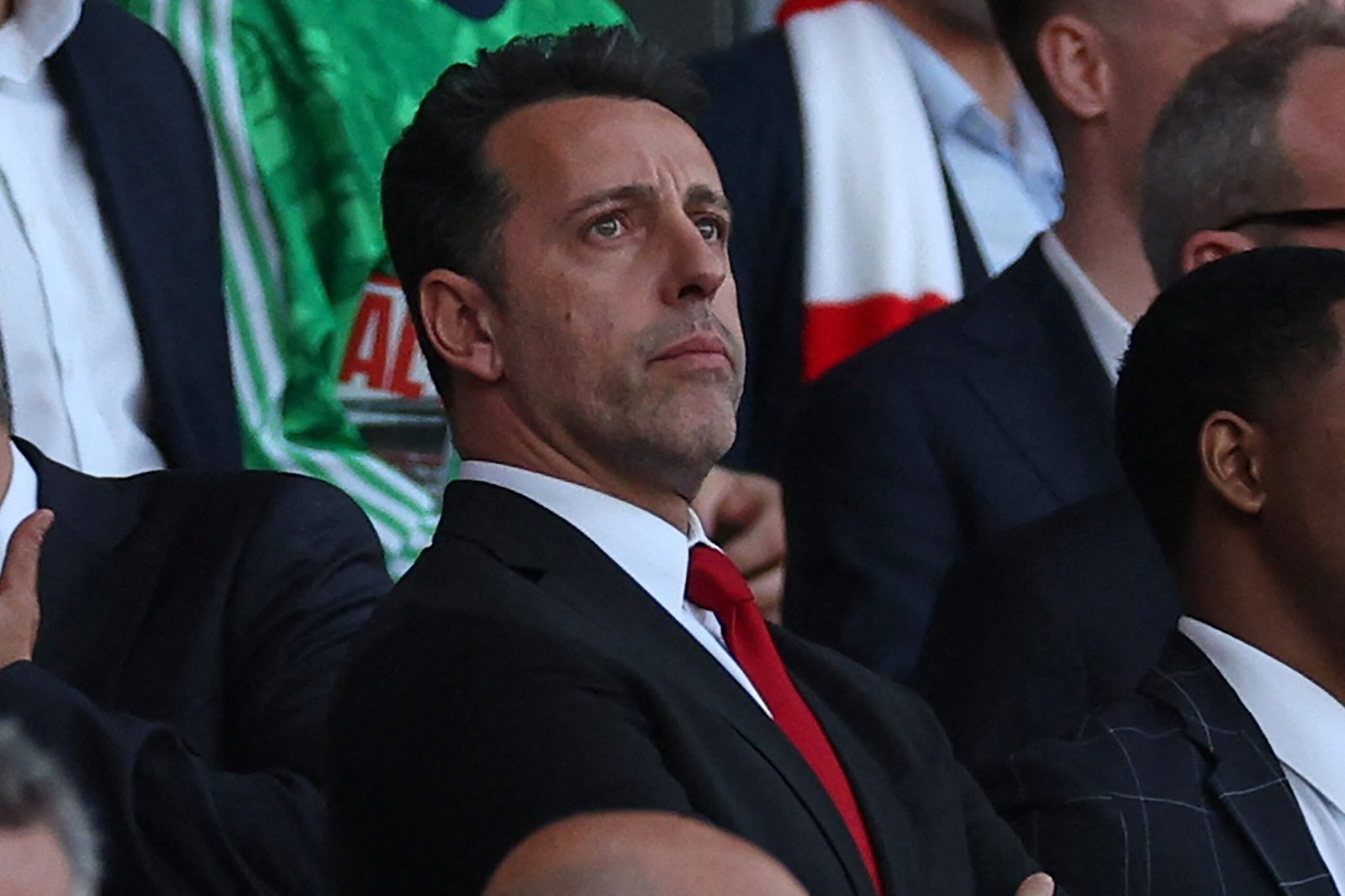
Edu travelled to Saudi Arabia in April (Adrian Dennis/AFP via Getty Images)
In April, Edu and assistant sporting director Jason Ayto flew to Saudi Arabia to build relationships with potential buyers. Arsenal were struck by the fact the Pro League’s football infrastructure and facilities are still in relative infancy. They were dubious whether any of their players would be tempted to move there.
In the early weeks of the window, Edu held a series of meetings in a London hotel regarding those players whose future was in doubt. The message to Nelson, Smith Rowe, Ramsdale and Eddie Nketiah was simple: no loans. Arsenal were determined to finally monetise some of their assets. In the case of Nelson, Smith Rowe and Nketiah, permanent deals held a particular appeal: as academy products, any fee would be recorded as pure profit on the books.
Arsenal were prepared to be more flexible with the departures of players who had spent last season out on loan. Nuno Tavares joined Lazio on loan with a conditional obligation to buy. Albert Sambi Lokonga was permitted to join Sevilla on loan, with the Spanish club holding an option to buy for a fee of €12million.
When it came to incomings, one of Arsenal’s primary targets was Sesko of RB Leipzig. Arsenal have tracked the 21-year-old Slovenian striker’s progress for years and the presence of a €65m release clause in his Leipzig contract made for an attractive market opportunity. Sesko was also intrigued by the prospect of joining Arsenal. Although Manchester United and Chelsea showed significant interest in the forward, the Emirates Stadium was his preferred destination if he was to leave Germany.
The biggest issue for Arsenal was timing. Sesko wanted his future resolved before the start of the Euros on June 14. Arsenal, however, preferred any major expenditure to fall within the 2024-25 accounting period, after the June 30 deadline.
What’s more, Arsenal wanted to offset any additions with sales. To sign Sesko, they needed assurance that one of their existing strikers would leave. At that early stage of the window, none of the interest in Nketiah had matured into serious negotiations. There was some tentative interest in Gabriel Jesus from Saudi Arabia, but nothing concrete.
Arsenal never came to the table with a formal bid for Sesko and the Slovenian elected to re-sign with Leipzig. Arsenal will continue to monitor his progress in Germany — he is expected to attract a significant market again next summer.
Arsenal were relaxed about Sesko’s decision, in large part due to Kai Havertz’s excellent form at centre-forward. Sesko’s release clause presented an opportunity, but Arsenal felt they had good centre-forward options already on the books in Havertz, Jesus, Nketiah and Leandro Trossard.
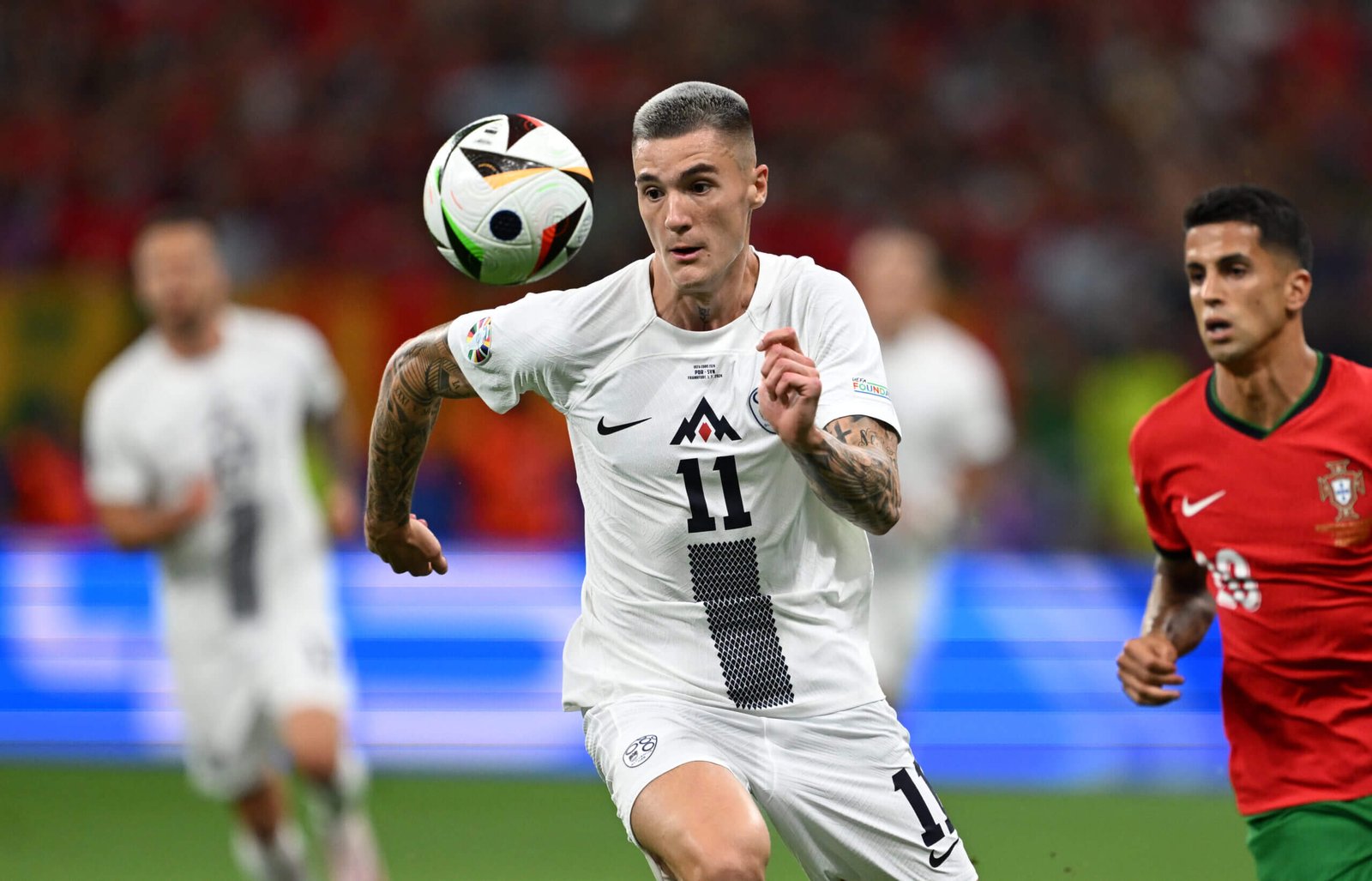
Sesko was one of Arsenal’s primary targets (Arne Dedert/picture alliance via Getty Images)
The summer’s first major signing was Raya, whose loan deal was converted into a permanent move in the first week of July. There was a mutual understanding between Arsenal and Brentford that Arsenal’s £27million option would be taken up once the new accounting period had begun.
A frequent topic of discussion among Arsenal’s leadership group was the plan for midfield — specifically regarding Declan Rice’s position. Arsenal’s record signing was brought in as a No 6 but had spent most of the second half of the season playing in a more advanced role as a No 8.
A decision on Rice’s deployment was seen as the key to determining the focus of Arsenal’s midfield recruitment, but despite significant internal debate, there was no definitive call made.
This was partly down to Arsenal’s desire to keep their options open. Tactical flexibility is an important part of Arteta’s plan.
Arsenal discussed holding midfielders such as Martin Zubimendi and Joao Neves but ultimately decided upon a different profile. In theory, Arsenal had already put £100million into the No 6 position the preceding summer by signing Rice. They moved in a different direction.
Arteta advocated most strongly for the signing of Merino — a physically dominant midfielder who could play as the left-sided central midfielder and cover as the holding midfielder. It was hoped that Merino could bring more structure and continuity to the left-hand side, which suffered from inconsistency in selection last season.
Merino also had just 12 months left on his contract, so Arsenal believed he would be attainable for an achievable fee. They began laying the groundwork for a move with the player’s camp.
Another position on the left flank Arsenal hoped to address was left-back. Arsenal first made contact with Calafiori’s agents in January, before dialogue increased in May.
There were some reservations: Calafiori has a history of knee problems and there were questions whether he was physically robust enough to thrive in the Premier League. A 40 per cent sell-on clause from Bologna to Basel was likely to drive the price high, but Arteta was insistent and Calafiori’s age and technical level made him a good fit for the club’s recruitment model.
When Arsenal’s interest intensified, Chelsea made overtures regarding a potential transfer. Calafiori’s representatives declined to enter talks out of respect for Arsenal.
When Real Madrid entered the fray, it was a different matter. Nobody says an outright no to Madrid. Arsenal had assured Calafiori’s camp they would proceed with the signing once they were confident of a significant sale. That looked likely to be Smith Rowe, who was fielding interest from Fulham.
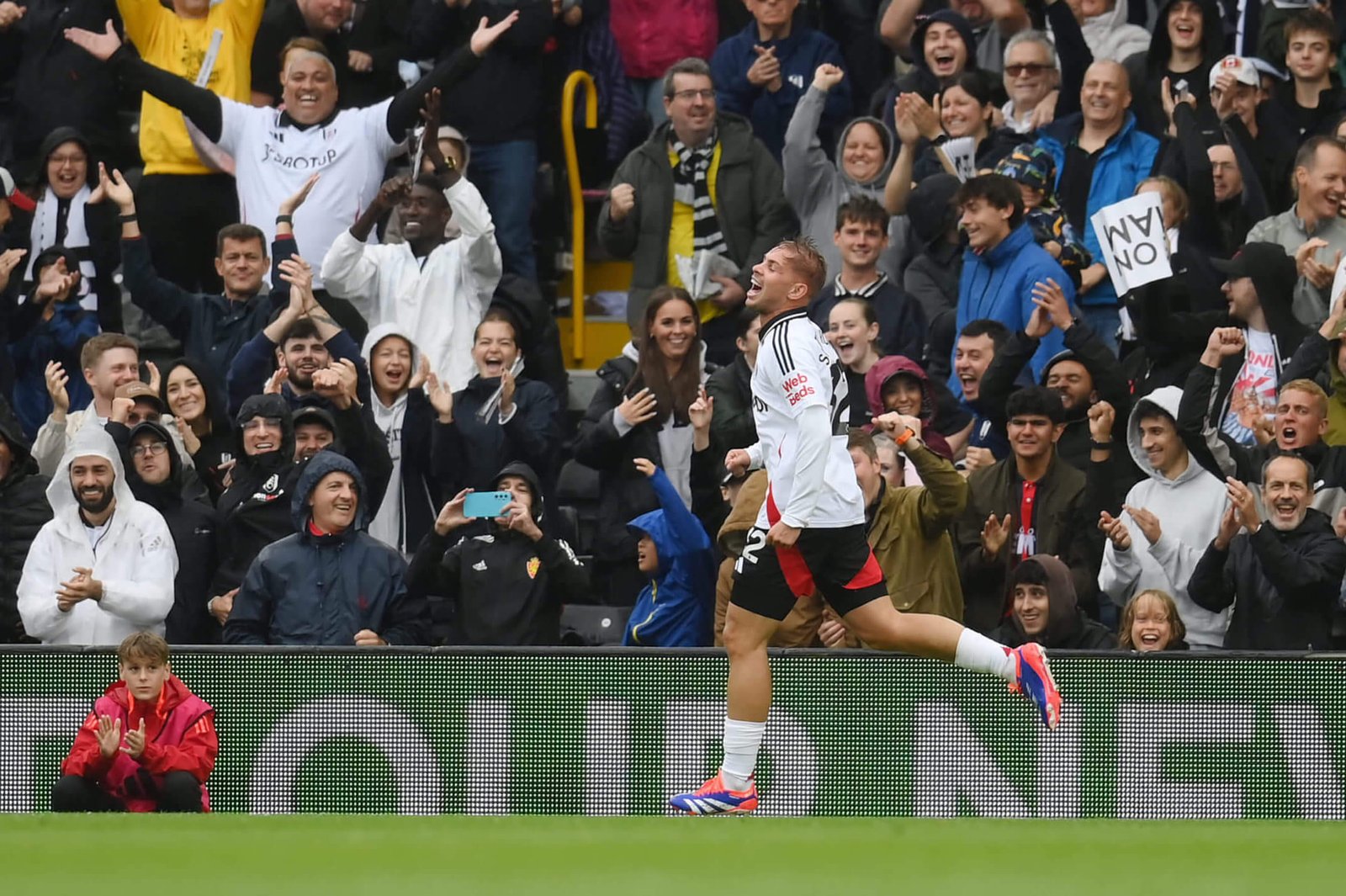
Smith Rowe left Arsenal to join Fulham in a record deal (Alex Broadway/Getty Images)
The shadow of Madrid, however, changed things. The threat of losing the player — or Real’s interest creating an auction that would send the price spiralling higher — persuaded them to push ahead with a deal.
Fortunately for Arsenal, the Smith Rowe sale was not far behind. Smith Rowe’s agent Jordan Wise had an open, respectful dialogue with Edu across the summer. There was mutual agreement that Smith Rowe had not played enough first-team football and that if a suitable opportunity arose for him to move, the club would be prepared to engage in those conversations.
Fulham emerged as the optimal choice for Smith Rowe. Joining a London club provided him with some continuity at a time of great upheaval. As their club-record signing, he knew he would be granted the playing time he needed and the patience he might require to return to his best level. Joining Fulham also provides Smith Rowe with a platform to showcase his talents, while leaving open the possibility of him moving to a bigger club in future.
Calafiori flew out to join Arsenal in the U.S. on the same day Smith Rowe returned to Europe to see through his move to Fulham. Arsenal had hoped to make Smith Rowe a special presentation before his departure, in recognition of his contribution to the club, but the complexities of the travel arrangements did not allow that to take place.
The £34million deal was presented as a record sale for Arsenal and laid down an important marker for their outgoing summer business. Arsenal have been eager to shed their reputation as poor sellers and the fee provided an important yardstick.
Arsenal were also pleased to achieve good prices for academy players such as Mika Biereth (£4million) and Brooke Norton-Cuffy (£3.5m). Charlie Patino joined Deportivo La Coruna for a fee of just £1m. In all three cases, however, Arsenal secured sell-on clauses.
Not all departures were quite so smooth. Ramsdale’s protracted exit dragged into deadline day. Nketiah endured a tumultuous summer. Having initially been uncertain about a move abroad, he was persuaded to join Marseille — only for the deal to break down.
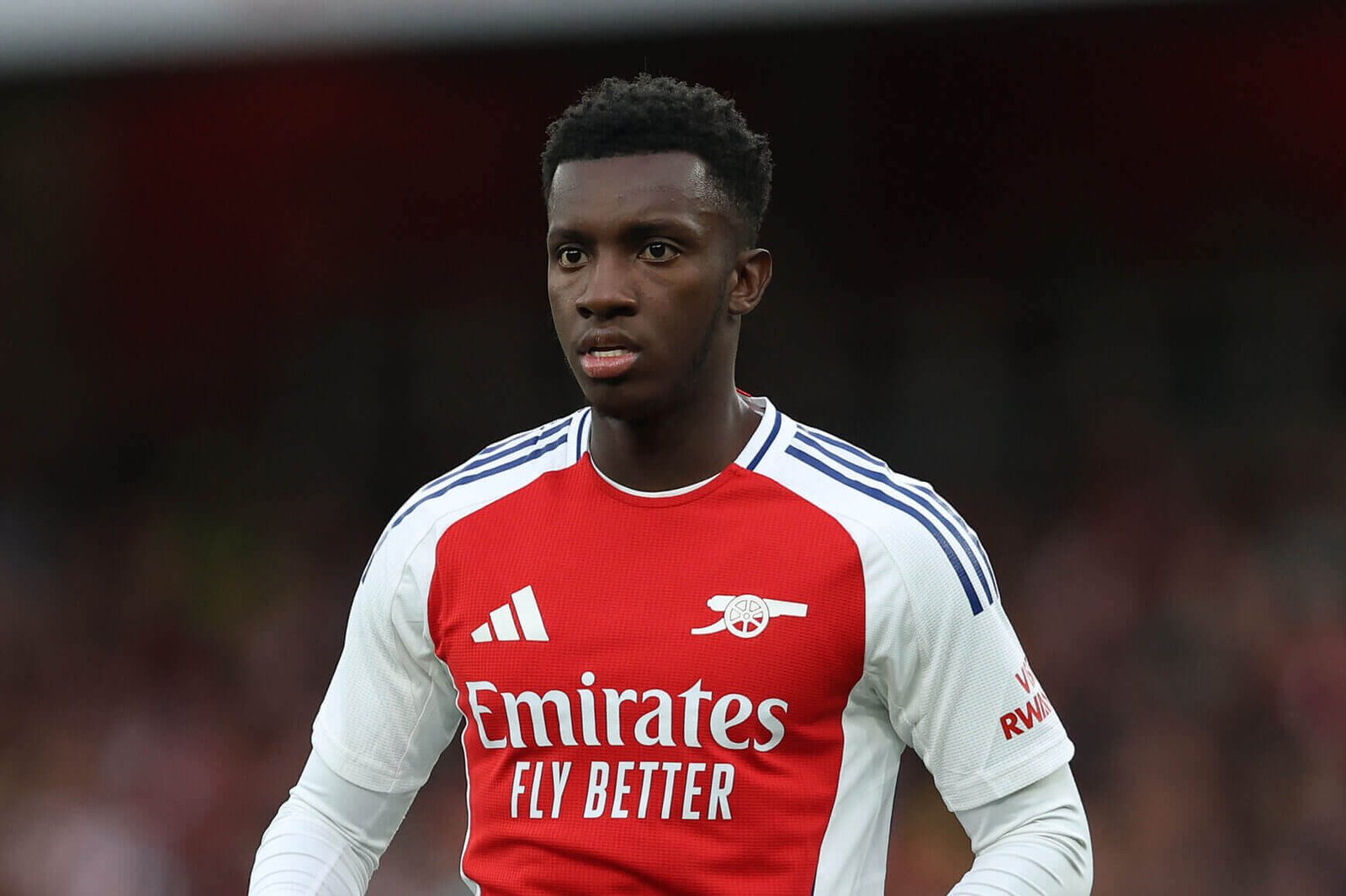
Nketiah ended up joining Palace (Crystal Pix/MB Media/Getty Images)
Nketiah then looked set for a move to Nottingham Forest. Edu has a good relationship with Evangelos Marinakis — he was among the guests at the Nottingham Forest owner’s birthday party in July — and the two clubs were working towards a £30million deal worth £25m plus a further £5m in add-ons.
In the end, Nketiah rejected a move to Forest in light of developing interest from Crystal Palace. The England international suffered during the tumultuous summer months, but ultimately got a move he was very satisfied with.
Nelson had to wait until the dying moments of the window to get his move. For most of the summer, the most consistent interest in him was from Leicester City, but their PSR position made a permanent deal difficult. When Arsenal agreed to loan Fabio Vieira to Porto, it appeared Nelson would have to stay — but the prospect of signing Sterling opened the door for the 24-year-old to join Fulham on loan, where he will link up with former team-mates Smith Rowe, Leno and Alex Iwobi.
Arsenal had hoped to sell Kieran Tierney this summer, but the hamstring injury he picked up at Euro 2024 would effectively rule him out of a move this summer. He’s not expected to return to training for several weeks yet. The subject of his future will likely be addressed in the January transfer window.
(Top photos: Getty Images)
Read the full article here


